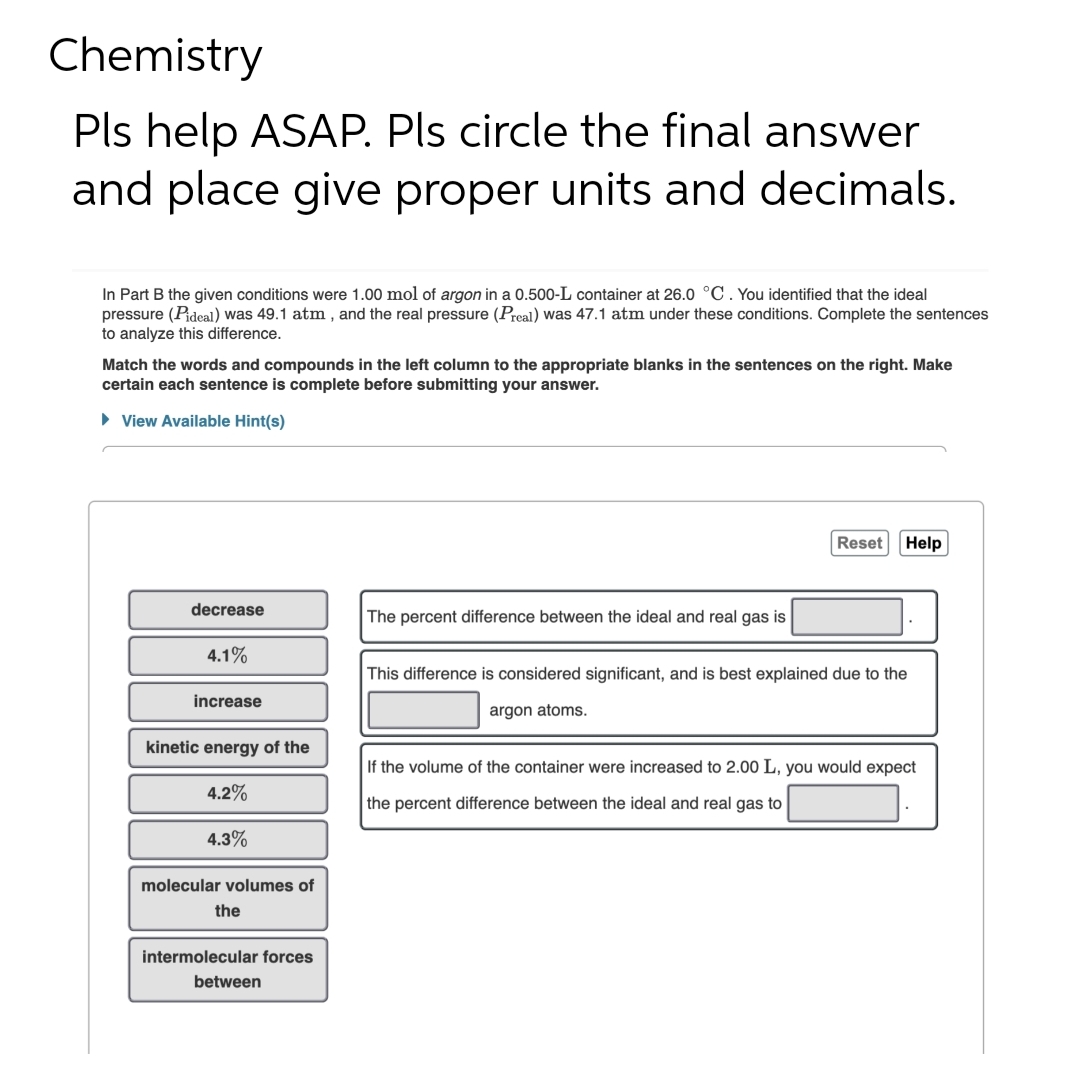In Part B the given conditions were 1.00 mol of argon in a 0.500-L container at 26.0 °C. You identified that the ideal pressure (Pideal) was 49.1 atm, and the real pressure (Preal) was 47.1 atm under these conditions. Complete the sentences to analyze this difference. Match the words and compounds in the left column to the appropriate blanks in the sentences on the right. Make certain each sentence is complete before submitting your answer. View Available Hint(s) Reset Help The percent difference between the ideal and real gas is decrease 4.1% This difference is considered significant, and is best explained due to the increase argon atoms. kinetic energy of the If the volume of the container were increased to 2.00 L, you would expect 4.2% the percent difference between the ideal and real gas to 4.3% molecular volumes of the intermolecular forces between
Ideal and Real Gases
Ideal gases obey conditions of the general gas laws under all states of pressure and temperature. Ideal gases are also named perfect gases. The attributes of ideal gases are as follows,
Gas Laws
Gas laws describe the ways in which volume, temperature, pressure, and other conditions correlate when matter is in a gaseous state. The very first observations about the physical properties of gases was made by Robert Boyle in 1662. Later discoveries were made by Charles, Gay-Lussac, Avogadro, and others. Eventually, these observations were combined to produce the ideal gas law.
Gaseous State
It is well known that matter exists in different forms in our surroundings. There are five known states of matter, such as solids, gases, liquids, plasma and Bose-Einstein condensate. The last two are known newly in the recent days. Thus, the detailed forms of matter studied are solids, gases and liquids. The best example of a substance that is present in different states is water. It is solid ice, gaseous vapor or steam and liquid water depending on the temperature and pressure conditions. This is due to the difference in the intermolecular forces and distances. The occurrence of three different phases is due to the difference in the two major forces, the force which tends to tightly hold molecules i.e., forces of attraction and the disruptive forces obtained from the thermal energy of molecules.
Please all part solution with hand by written

Trending now
This is a popular solution!
Step by step
Solved in 2 steps









